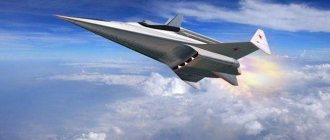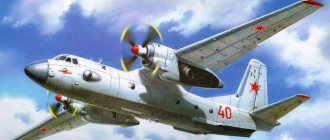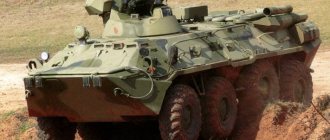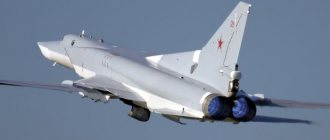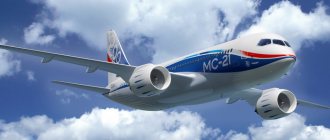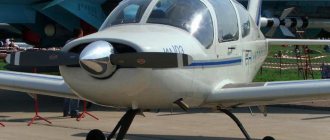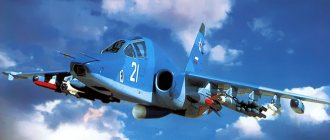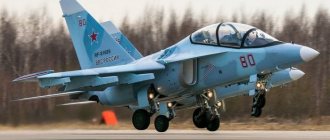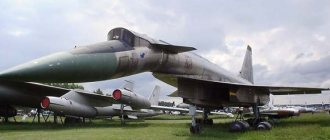The Cold War, which took place between the USA and the USSR in 1946-1991, is long over. At least that's what many experts think. However, the arms race did not stop for a minute, and even today it is in the stage of active development. Despite the fact that today the main threats to the country are terrorist groups, relations between world powers are also tense. All this creates conditions for the development of military technologies, one of which is a hypersonic aircraft.
Necessity
Relations between the United States and Russia are greatly strained. And although at the official level the United States in Russia is called a partner country, many political and military experts argue that there is an unspoken war between the countries not only on the political front, but also on the military one in the form of an arms race. In addition, the United States is actively using NATO to encircle Russia with its missile defense systems.
This cannot but worry the leadership of Russia, which has long ago begun developing unmanned aerial vehicles that exceed hypersonic speed. These drones can be equipped with a nuclear warhead, and they can easily deliver a bomb to anywhere in the world, and quite quickly. A similar hypersonic aircraft has already been created - this is the Yu-71 airliner, which is currently being tested in strict secrecy.
Development of hypersonic weapons
For the first time, testing aircraft that could fly at the speed of sound began in the 50s of the 20th century. Then it was still associated with the so-called Cold War, when two developed powers (USSR and the USA) sought to overtake each other in the arms race. The first project was the Spiral system, which was a compact orbital aircraft. It was supposed to compete with and even surpass the US hypersonic aircraft X-20 Dyna Soar. Also, the Soviet aircraft had to be able to reach speeds of up to 7000 km/h and not fall apart in the atmosphere under overloads.
And although Soviet scientists and designers tried to bring such an idea to life, they failed to even come close to the cherished characteristics. The prototype did not even take off, but the USSR government breathed a sigh of relief when the American plane also failed during testing. The technologies of that time, including in the aviation industry, were infinitely far from the current ones, so the creation of an aircraft that could exceed the speed of sound several times was doomed to failure.
However, in 1991, a test was carried out of an aircraft that could reach speeds exceeding the speed of sound. It was a flying laboratory "Cold", created on the basis of the 5B28 rocket. The test was successful, and then the plane was able to reach a speed of 1900 km/h. Despite progress, development was stopped after 1998 due to the economic crisis.
Hypersonic aircraft
In the 60s in the United States, advanced designers began to implement a program to develop and fly the experimental rocket plane North American X-15, which became the only GLA aircraft in history for the next 40 years. It was he who made the first manned suborbital space flights.
Similar programs have been developed in other countries. The closest of them were Spiral, Silbervogel, X-20 Dyna Soar, North American X-15. In the 21st century, space tourism has become quite popular among the rich. In this regard, private projects of suborbital manned spacecraft began to emerge. In 2004, the first devices of this type, Space Ship One, flew into space. As a development of the program, the next stage was used - Space Ship Two. In the future, Virgin Galactic does not plan to stop there and is currently developing new types of ships. In addition, there are passenger suborbital hypersonic airliners (ZEHST, SpaceLiner and others).
Technologies of the 21st century
There is no accurate and official information about the development of hypersonic aircraft. However, if we collect materials from open sources, we can conclude that such developments were carried out in several directions at once:
- Creation of warheads for intercontinental ballistic missiles. Their mass exceeded the mass of standard missiles, but due to the ability to maneuver in the atmosphere, it is impossible or, at least, extremely difficult to intercept them with missile defense systems.
- The development of the Zircon complex is another direction in the development of technology, which is based on the use of the Yakhont supersonic missile defense system.
- Creation of a complex whose rockets can exceed the speed of sound 13 times.
If all these projects are united in one holding company, then by joint efforts an air-, ground- or ship-based missile can be created. If the Prompt Global Strike project, created in the United States, is successful, then the Americans will have the opportunity to hit anywhere in the world within one hour. Russia will be able to defend itself only with technologies of its own development.
American and British experts have recorded tests of supersonic missiles that can reach speeds of up to 11,200 km/h. Given such a high speed, it is almost impossible to shoot them down (not a single missile defense system in the world is capable of this). Moreover, they are even extremely difficult to spy on. There is very little information about the project, which sometimes appears under the name "Yu-71".
What the planes of the future look like: hypersonic speed and solar energy
People have always strived to conquer the sky, and it seemed that not a single person was given the ability to fly like a bird - one only has to remember the myth of Icarus. Since the advent of the Wright brothers' first gliders at the beginning of the 20th century, aircraft designers have repeatedly crossed technological boundaries and created revolutions. Today we no longer consider the massive use of unmanned aerial vehicles or aircraft powered by liquid hydrogen to be science fiction. But new technologies need to be backed by unconditional guarantees of safety and security, and companies around the world are working hard to win the support of their passengers.
Video game controls
Active Stick technology , developed in 2022 by BAE Systems, is used on the Gulfstream G500 business jet, where it provides haptic feedback to the pilot's aircraft systems. Active Stick gives him the ability to literally physically feel his car instead of relying only on instrument readings.
BAE Systems is a UK defense company. It is one of the top 10 global arms companies.
The Gulfstream G550 is a twin-engine business jet aircraft manufactured by Gulfstream Aerospace Corporation.
Image: Gulfstream
Fly-by-Wire (FBW) is a system that replaced the previous manual (mechanical) aircraft control circuit with an electronic one - one of the wonders of modern aerospace technology. Previous generation aircraft were controlled using a huge number of cables, cables, pulleys and hydraulics, which significantly made the aircraft heavier. However, according to experts, using a computer joystick reduces the actual experience of flying to the level of a video game.
Fly-by-wire control system (EDCS, Fly-by-Wire) is an aircraft control system that ensures the transmission of control signals from the controls in the cockpit (for example, from the aircraft control stick, rudder pedals) to the actuators of aerodynamic surfaces (rudders and take-off wheels). wing landing mechanization) in the form of electrical signals. It was first used in the American Vigilante bombers in 1961.
Boeing , like BAE Systems, is experimenting with an automated approach to control. The company introduced a new computer control feature in the Boeing 737 MAX 8 and MAX 9 . It avoids stalling, which can occur if the aircraft's nose is raised too much. However, experts warn that during emergency situations this tool may not work correctly and simply send the plane into a dive even with manual control. The manuals for the new planes did not mention that Boeing's control could change during an emergency, and airline officials are somewhat confused by the company's lack of comment. In fact, some experts fear that it was this new feature that led to the Java Sea disaster.
On October 29, 2022, a Lion Air Boeing 737 MAX 8 crashed into the Java Sea 13 minutes after takeoff. The plane crash killed 189 people.
Due to the emergence of a huge number of new technologies in the aircraft industry, the question inevitably arises about the safety of using artificial intelligence and autonomous computer solutions. To ensure the safety of the airspace, SkyGrid is creating a blockchain system in which all data on the flights of unmanned aerial vehicles will be stored. Artificial intelligence will analyze large volumes of data. The neural network will also be able to transmit all information about flights to state aviation dispatch systems.
Ultrafast and unmanned aircraft
In June of this year, Boeing Corporation presented at a conference in Atlanta a project for a hypersonic aircraft that would fly from New York to London in two hours and from New York to Tokyo in three hours. The speed of the Boeing aircraft should be five times higher than the speed of sound: it will exceed 6 thousand km/h. For comparison, the maximum speed of the supersonic passenger plane Concorde was twice the speed of sound. According to Boeing estimates, it will take at least 20–30 years to create a hypersonic aircraft.
Image: Boeing
"Concorde" is a British-French supersonic passenger aircraft (SPS), one of two (together with the Tu-144) types of supersonic aircraft that were in commercial operation.
Concorde was created through a merger in 1962. A total of 20 aircraft were produced. The first flight of the prototype took place in 1969, and entry into commercial service occurred in 1976. Over 27 years of regular and charter flights, more than 3 million passengers have been transported.
On July 25, 2000, one plane crashed while taking off from Paris Charles de Gaulle airport, killing 113 people. This disaster suspended Concorde flights for a year and a half. In subsequent years, work was carried out to modify the aircraft fleet. But after the resumption of flights, a series of incidents followed, the most notable of which were the failure of one of the rudder sections and a fuel leak, which resulted in an engine shutdown.
On April 10, 2003, British Airways and Air France announced their decision to cease commercial operations of their Concorde fleet.
In Russia, the Central Aerohydrodynamic Institute named after Professor N.E. Zhukovsky (TsAGI) announced the development of a project for a hypersonic passenger aircraft with liquid hydrogen engines. TsAGI General Director Kirill Sypalo said that the appearance of domestic hydrogen aircraft is scheduled for 2030–2031. It is planned that hypersonic aircraft will carry out passenger transportation throughout Russia.
Image: TsAGI
In three years , Airbus, Rolls-Royce and Siemens will conduct the first flight tests of the E-Fan X hybrid aircraft. The design will be based on the BAE 146 passenger aircraft. Engineers will replace one of the BAE 146's four turbofan gas engines with a hybrid engine. Its operation will be ensured by batteries and an on-board generator running on aviation fuel.
Aurora Flight Sciences , a subsidiary of aircraft developer Boeing, will release the first solar-powered unmanned aircraft in 2022. The Odysseus unmanned scientific aircraft is designed for continuous flight and climate and atmospheric research. The creators claim that Odysseus will be able to fly for several months at a time and produce zero carbon dioxide emissions. Boeing will mainly use the drone for weather monitoring, but the range of possible applications is much wider - communications, reconnaissance, science. Boeing specialists note that they can reprogram Odysseus depending on the tasks.
Norway is moving in the same direction - organizing environmentally friendly flights. Falk-Petersen, head of the state-owned Norwegian company Avinor , said that to begin with, airlines will test “transition technologies” - biofuels and hybrid engines. Avinor also plans to launch a tender to launch a commercial flight using a small electric plane that can carry up to 19 passengers. The first flights of the aircraft should take place in 2025. From 2040, all short-haul aircraft in Norway will switch to electric propulsion.
Avinor AS is a public limited company that operates the majority of civil airports in Norway. The Norwegian state, through the Ministry of Transport and Communications, controls 100% of the authorized capital.
The first mass-produced electric aircraft to go on sale was the Alisport Silent Club single-seat glider in 1997. It was driven by a 13 kW engine.
Since May 2015, Slovenian manufacturer Pipistrel has been producing the Alpha Electro, a two-seat all-electric aircraft designed for training.
Lockheed Martin has already announced the completion of the “drawing” stage of development of the X-59 Quiet Supersonic Technology (QueSST) and the beginning of its actual production. The first test flight is planned for 2022.
Long-term collaboration between Lockheed Martin and NASA prompted the goal of creating the X-plane QueSST - testing technologies that would eventually lead to a low-noise commercial supersonic aircraft that would not create problems for city residents.
The X-59 QueSST will fly at an altitude of 17 thousand meters at a speed of 1,512 km/h, while the noise at the moment of breaking the sound barrier will not exceed 75 dB, which corresponds to the loudness of a bang when closing a car door.
MS-21-300 passenger aircraft are already undergoing flight certification tests in Russia . During testing, they will be subjected to repeated loads simulating at least 180 thousand flights. The uniqueness of this airliner lies in the wing made of polymer composites, the first in the world created for aircraft with a capacity of over 130 passengers. Thanks to this design, operating costs for operating the MS-21 will be 12–15% lower than those of its analogues. The share of composites in the MC-21 design is over 30% and is unique for this class of aircraft.
In 2022, Russian developers presented a new turbine engine TV7-117ST-01. Its characteristics generally increase the efficiency of the entire almost fully automated system. It has already been installed on the Il-114-300 passenger aircraft, which will be intended for operation on local airlines. The engine will increase, compared to the Il-114, the flight range with a full permissible load to 1,900 km.
Flying cars and a backpack on your back
Rolls-Royce technical director Paul Stein named three categories of aircraft that will be the first to switch to electric propulsion. The first category includes air taxis - small aircraft designed for one to four passengers, with a cruising range of no more than 120 km. “For such vessels, the batteries are almost ready,” Stein said. This probably explains the increased popularity of the idea of creating and putting into operation flying cars, which is what small air taxis are now called. Guardian cites Chinese Geely-owned startup Terrafugia as examples, as well as Slovenian company Pipistrel. Airbus is also developing its version of the air taxi together with specialists from Audi and its subsidiary Italdesign.
On November 27 this year, the Pop.Up Next was presented in Amsterdam at the annual Drone Week, where it successfully demonstrated all the functions included in it.
The concept has an important feature - it is modular, thanks to which it can transport passengers both by land and by air. Pop.Up Next consists of three separate modules. A 60 kW (80 hp) electric chassis is attached to the passenger capsule, thereby forming an electric vehicle. At the same time, passengers, using a special application, will be able to call a flying module at any time (for example, hopelessly stuck in a traffic jam) and, having connected with it, arrive by air at their destination.
A separate direction in the development of civil aviation is JetMan - jet backpacks that will allow a person to fly in the future. The aircraft is controlled only by shifting the center of gravity. The backpack can reach speeds of up to 300 km/h, and the maximum flight range is ten minutes.
The trend towards mobility of aircraft capable of moving even within a metropolis, unmanned technologies and hypersonic speeds already today reflects the future situation of civil aviation. Movement in three dimensions is the future of transport, which, according to Uber CEO Dara Khosrowshahi, is already within 20-30 years. But perhaps all these inventions are unnecessary if soon we will only need a backpack on our back to cover a distance of a thousand kilometers.
What is known about the Russian hypersonic aircraft Yu-71?
Considering that the project is classified, there is very little information about it. It is known that this glider is part of a supersonic rocket program, and in theory it is capable of flying to New York in 40 minutes. Of course, this information has no official confirmation and exists at the level of guesswork and rumors. But given that Russian supersonic missiles can reach speeds of 11,200 km/h, such conclusions seem quite logical.
According to various sources, the hypersonic aircraft “Yu-71”:
- Has high maneuverability.
- Can plan.
- Capable of reaching speeds of over 11,000 km/h.
- Can go into space during a flight.
Advantages and disadvantages of space exploration
There are several advantages of certain types of developments, but mainly due to the low level of knowledge of this industry, the disadvantages mainly predominate. The advantage of a hypersonic vehicle like the X-30 is the reduction or elimination of the transported oxidizer. Since approximately 75% of the entire aircraft structure is oxidizer. The elimination of this mass will lead to a lighter weight of the device, and therefore an increase in payload. In turn, this will reduce the cost of transporting various cargo into orbit.
A liquid rocket engine or liquid propellant rocket engine has significant differences in high thrust in relation to mass, which, in turn, allows rockets to achieve enormous performance in delivering cargo into orbit. Under the conditions of using a scramjet engine, the ratio increases, which will lead to an increase in the share of the engine in the mass of the device.
The main disadvantage is the high cost of not only the development of space programs and research of hypersonic vehicles, but also of further operation. Replenishing fuel, replacing spare parts and components - all this together greatly increases the price of such programs.
Statements
At the moment, tests of the Russian hypersonic aircraft Yu-71 have not yet been completed. However, some experts argue that by 2025 Russia may receive this supersonic glider, and it could be equipped with nuclear weapons. Such an aircraft will be put into service, and in theory it will be capable of delivering a targeted nuclear strike anywhere on the planet within just one hour.
Russia's representative to NATO, Dmitry Rogozin, said the USSR's once most developed and advanced industry had fallen behind the arms race in recent decades. However, more recently the army has begun to revive. Outdated Soviet technology is being replaced by new models of Russian developments. In addition, fifth-generation weapons, stuck in the 90s in the form of projects on papers, are taking on visible shape. According to the politician, new models of Russian weapons may surprise the world with their unpredictability. It is likely that Rogozin is referring to the new hypersonic aircraft Yu-71, which can carry a nuclear warhead.
It is believed that the development of this aircraft began in 2010, but the United States learned about it only in 2015. If the information about its technical characteristics is true, then the Pentagon will have to solve a difficult problem, since the missile defense systems used in Europe and on its territory will not be able to provide counteraction to such an aircraft. In addition, the United States and many other countries will simply be defenseless against such weapons.
Hypersonic stages of MTKK and AKS - spaceships and spaceplanes
The second or only stage entering orbit for all winged AKS and MTKK performs a hypersonic flight according to the descent trajectory, and for some during ascent.
In the 60s, projects of orbital spaceplanes were developed in the USSR and the USA. But they were never implemented. In the Soviet Union - Lapotok, LKS, and in the USA - X-20 Dyna Soar provided for vertical launch on standard launch vehicles (LV), which became GZLA especially upon return. In the period from the 80s to the 2000s, the United States selected an extensive program for one hundred flights of the MTK Space Shuttle with an orbital spaceplane. A similar, but launched on a launch vehicle, the Buran spacecraft (USSR) only took off into orbit once. BOR-4 and BOR-5 tried to fly in front of him.
From the 90s to the 2000s, there were many projects that were canceled before practical implementation. AKS and transport space systems: Russia – spacecraft “RAKS” and spaceplane “MAX”; USA - single-stage spacecraft Venture Star and Rockwell X-30 (NASP); France and the European Union - Hermes spaceplane; Japan – spaceplane NORE, ASSTS; Germany - "Sänger-2"; UK – HOTOL; India - Hyperplane spaceplane and others.
In the United States, the development of orbital flights under the Boeing X-37 project is still ongoing. The same experiments are being carried out by Great Britain, India, China and others.
Development plans
Of course, there is no data regarding the adoption of the promising Yu-71 aircraft, but it is known that it has been in development since 2009. In this case, the device will be able not only to fly in a straight path, but also to maneuver.
It is maneuverability at hypersonic speeds that will become a feature of the aircraft. Doctor of Military Sciences Konstantin Sivkov argues that intercontinental missiles can reach supersonic speeds, but at the same time they act like conventional ballistic warheads. Consequently, their flight path is easily calculated, which makes it possible for the missile defense system to shoot them down. But controlled aircraft pose a serious threat to the enemy, since their trajectory is unpredictable. Consequently, it is impossible to determine at what point the bomb will be released, and since the release point cannot be determined, the trajectory of the warhead’s fall is not calculated.
In Tula on September 19, 2012, at a meeting of the military-industrial commission, Dmitry Rogozin said that a new holding should soon be created, the task of which would be to develop hypersonic technologies. The enterprises that will be part of the holding were immediately named:
- "Tactical missile weapons."
- "NPO Mashinostroyenia" At the moment, the company is developing supersonic technologies, but at the moment the company is part of the Roscosmos structure.
- The next member of the holding should be the Almaz-Antey concern, which is currently developing technologies for the aerospace and missile defense industries.
Rogozin believes that such a merger is necessary, but legal aspects do not allow it to take place. It is also noted that the creation of a holding does not imply the absorption of one company by another. This is precisely the merger and joint work of all enterprises, which will speed up the development of hypersonic technologies.
Chairman of the Council under the Russian Ministry of Defense Igor Korotchenko also supports the idea of creating a holding company that would develop hypersonic technologies. According to him, the new holding is really necessary, because it will allow all efforts to be directed to the creation of a promising type of weapon. Both companies have great potential, but individually they will not be able to achieve the results that are possible by combining their efforts. It is together that they will be able to contribute to the development of the Russian defense complex and create the fastest aircraft in the world, the speed of which will exceed expectations.
NI: New hypersonic aircraft SR-72 may soon take off
Hypersonic weapons, capable of flying at speeds five times the speed of sound, are now trending in defense industrial complexes around the world. China, Russia and the United States are vigorously and relatively openly pursuing a wide range of hypersonic weapons programs, adding fuel to the fire of a growing arms race.
Although long-range ballistic missiles can already reach hypersonic speeds, they travel on predictable trajectories and can be detected in advance, giving military and political leaders time to react accordingly. In addition, a growing number of missile defense systems can at least partially repel ballistic missile attacks, writes The National Interest.
However, hypersonic missiles are not the only area where the defense industry of leading countries is trying to apply supersonic speed technologies.
Back in 2013, Lockheed Martin chief executive Robert Weiss caused a stir when he told Aviation Week that his aerospace corporation was actively developing a hypersonic aircraft. Weiss then said that a promising aircraft called the SR-72 would replace the decommissioned legendary SR-71 Blackbird spy plane.
According to The National Interest, not a single manned aircraft in service at that time could compare with the SR-71's maximum range combat missions at a speed of 3M. Until recently, the publication notes, SR-71s were simply superior to anti-aircraft guided missiles fired at them during photographic reconnaissance over North Korea and the Middle East. Since the combat use of the Blackbird is relatively poorly covered, it is advisable to talk about this page of the aircraft’s biography in more detail.
Live firing of the SR-71
Gazeta.Ru does not have data on attacks by anti-aircraft missile units on SR-71 aircraft in the skies of North Korea. As for the combat operations in Vietnam (for some reason The National Interest does not mention them), at that time SR-71 aircraft conducted aerial reconnaissance of the territory of the Democratic Republic of Vietnam from altitudes of 23–24 thousand meters and operated only during daylight hours with clear and sunny weather. At the same time, their flight speed over the territory of North Vietnam ranged from 2800 to 3200 km/h (at times up to 3700 km/h).
The peculiarities of anti-aircraft missile forces firing at the SR-71 are primarily related to its high aircraft flight altitudes and speed.
The high tactical, technical and flight characteristics of the Blackbird, combined with the presence on board of warning equipment for radar irradiation and missile launch, as well as active jamming equipment, ensured the effective use of the vehicle and the low probability of its destruction by the fire of air defense systems used at that time in Vietnam .
With such movement parameters of the SR-71 for the SA-75M air defense system, the depth of the affected area was limited to only 5-9 km with a maximum target parameter of 14-18 km. The required launch range to ensure that the missile met the aircraft at the far edge of the affected area was 75-76 km. Under these conditions, firing was possible only in the absence of interference and aiming the missiles using the “half straightening” (“HS”) method.
In order to open fire on the Blackbird in a timely manner, its detection range had to be at least 100–105 km when preparing data using the SA-75 automated air defense system launcher. In fact, the average detection range of the SR-71 (according to the experience of Vietnamese crews) was only 70-75 km.
This, in principle, made it possible to fire according to pre-calculated initial data, but the presence of reconnaissance and active jamming equipment made it possible for the Blackbird crews to take effective response actions in a timely manner.
Thus, 4–5 seconds after switching the radio transmitter of missile control commands (RPK) of the SA-75M air defense system to the antenna on the SR-71, the active noise jamming equipment was switched on. At the same time, anti-aircraft missile divisions, for which the target parameter was within 10 km, did not observe the mark from the aircraft against the background of intense interference and in this case could carry out missile guidance only using the “three points” (“TT”) method.
Divisions for which the air reconnaissance parameter was 10-15 km observed the SR-71 against a background of interference only from a range of 30-40 km, that is, they had the opportunity to switch to the “half straightening” method only before the missile met the target. The target, against a background of interference, was observed along the entire flight route by divisions for which the parameter was more than 38-40 km, that is, significantly more than the maximum parameter permissible for the SA-75M.
In 1968-1969, the anti-aircraft missile forces of the DRV air defense carried out 22 shootings at SR-71 strategic reconnaissance aircraft, using 29 B-750 missiles of various modifications.
All shootings were unsuccessful.
During the fighting in the Middle East in October 1973, as well as after its cessation, SR-71s made several reconnaissance raids over the territory of Egypt and Syria, operating from the continental United States. The flight to the reconnaissance area took place without intermediate landings with five to six refuelings in the air. The total length of the route was about 23 thousand km, the flight time was more than 10 hours. In the airspace above the reconnaissance territory of the UAR, CAP, Jordan and Lebanon, the SR-71 aircraft stayed from 35 to 55 minutes, the flight altitude in the reconnaissance area was 20-22 thousand m, the speed was over 3000 km/h.
The anti-aircraft missile forces of Syria and Egypt did not fire at the SR-71, since they were practically not provided with timely radar information necessary to bring the air defense system into readiness for missile launches.
During Operation Prairie Fire in April 1986, the SR-71 was also not fired upon. The planes freely carried out aerial reconnaissance.
Thus, during the fighting, not a single one of the Blackbirds was hit by anti-aircraft missile fire.
Possible appearance of the SR-72
Now the latest surface-to-air missiles make Mach 3 too fast for combat aircraft to survive, but hypersonic aircraft could once again outpace threats against it, The National Interest writes.
The SR-72, shown in Lockheed Martin's rendering, was described as an aircraft capable of flying at speeds six times the speed of sound.
However, the problem was not so much creating an aircraft that could reach hypersonic speeds, but ensuring that it could also take off and land at lower speeds. Let us recall that the first manned hypersonic aircraft, the X-15, which made suborbital space flights (reached an altitude of 108 km) at a speed of 6.7 M, took off and was launched using a B-52 strategic bomber.
Lockheed Martin CEO Robert Weiss stated the following: “...all I can say is that the technology is mature and we, along with DARPA, are working hard to get this capability into the hands of our military as quickly as possible. I cannot provide any time frame or any other specific information about the capabilities of this aircraft. All this is very delicate. We can recognize the opportunities that exist, but any specifics of the program are not yet public."
Lockheed and Aerojet Rocketdyne are reported to have made a breakthrough by developing a combined cycle engine that includes two turbojets for operation at speeds below Mach 3 and a hypersonic ramjet engine (scramjet) for hypersonic cruise flights.
A scramjet engine creates thrust by sucking in air while moving at supersonic speeds. This means that a separate engine must bring the aircraft to these speeds before the scramjet can be activated.
The combined cycle engine makes a two-engine solution viable since the turbojet and scramjet will share the same air intakes and exhaust nozzles.
Robert Weiss has made it clear that he hopes Lockheed Martin will receive funding to build a sixty-foot long, single-engine manned test aircraft (the size of a fighter jet) that would cost "only" $1 billion. This would then lead to the development of the operational twin-engine SR-72 over a hundred feet high.
For six years after Robert Weiss' speech, Lockheed Martin officials continued to draw attention to a supposedly secret program, even too secret to be disclosed to the public, while making statements that seemed to imply that the company had already built a test stand SR-72.
Lockheed Martin's promotion of a hypersonic aircraft that may (or may not) already exist is clearly aimed at securing additional funding.
This may be due to the fact that the corporation is implementing a project with the US Defense Advanced Research Projects Agency (DARPA), which focuses on the innovative development of cutting-edge technologies, often far ahead of actual industry capabilities.
Although the US Air Force is interested in adopting hypersonic aircraft in the long term, writes The National Interest, it already knows what it wants in the near future - a plethora of F-35 stealth fighters (also built by Lockheed) and upcoming strategic aircraft new generation bombers B-21 Raider.
Since the US Air Force can no longer buy all the aircraft it needs at once, finding funding for the very expensive avant-garde concept will be very difficult.
Hypersonic bomber
The Blackbird's acronym "SR" stands for "Strategic Reconnaissance", reflecting that its mission was to immediately penetrate protected airspace and take pictures of what was happening below before anyone could move or conceal reconnaissance targets. However, the name SR-72 is perhaps misleading for a number of reasons.
The hypersonic SR-72 will almost certainly be an unmanned aerial vehicle. In other words, a UAV, usually designated "Q" in the United States.
The extent to which the SR-72 will rely on a man-in-the-loop system (which can be prone to glitches) or pre-programmed controls versus its own autonomous algorithms remains an interesting question, writes The National Interest.
Moreover, although the SR-72 will serve as a strategic reconnaissance aircraft, it will also likely be designed to attack enemy targets, and with very short flight time. In other words, it will be a bomber.
Flying at speeds of about 4,000 mph, the hypersonic bomber could theoretically take off from a base in the continental United States and hit targets across the Pacific or Atlantic Ocean in just 90 minutes.
Unlike various hypersonic missiles under development, it could then return to the departure airfield and be prepared for further combat missions.
Robert Weiss stated that from the very beginning of the SR-72, the aircraft was intended to have "strike capabilities." The SR-72 project is reportedly a follow-up to the rocket-powered Falcon HTV-3 hypersonic testbed that was associated with the US Prompt Global Strike program.
However, the cost-effectiveness of a hypersonic bomber/reconnaissance aircraft is highly debatable.
It certainly will not have the necessary stealth characteristics, since the heat generated when moving at such high speeds will make such aircraft clearly visible to reconnaissance means. In addition, at a speed of M - 5-6, all radio-absorbing coatings will burn out.
Thus, potential adversaries are likely to detect its approach, even if they have relatively little time to react accordingly.
While it may exceed the capabilities of modern air defense missiles, the existence of the SR-72 will undoubtedly facilitate the further development of surface-to-air guided missiles capable of hitting hypersonic targets.
Used as a bomber, the SR-72 would also require the costly development of airborne weapons designed to be launched at such high speeds.
The SR-71 Blackbird was retired (last flown in 1998) and has not been replaced by any other aircraft. Aerial reconnaissance has become less in demand due to the improvement in the capabilities of spy satellites. In addition, UAVs were supplied to equip the troops. Although their flight speed is not so high, the degree of radar visibility has become significantly lower. In addition, they are orders of magnitude cheaper, and their service life is much longer. These UAVs include, for example, the Lockheed Martin RQ-170 Sentinel. This is an unmanned aerial vehicle created using stealth technology based on the flying wing principle. The letter "R" in the name of the device means that it is intended for reconnaissance, and the "Q" means "unmanned vehicle."
Sure, a Blackbird can quickly penetrate protected airspace, but a stealth drone can do so more slowly but steadily orbit an area of interest, providing a real-time video feed for hours.
By the way, the Pentagon entered into a contract with Northrop Grumman Corporation to create ultra-small, stealth UAVs RQ-180 with a long service life. And this decision may be perceived as being made at the expense of the SR-72.
Let us remind you that the Northrop Grumman RQ-180, a reconnaissance UAV developed by the company as part of the Joint Unmanned Combat Air Systems project, can patrol for 24 hours at an altitude of up to 18,000 meters.
“The RQ-180 is a new generation of UAVs designed to operate in conditions of counteraction from an enemy with a developed air defense and air defense system. The main purpose of the RQ-180 is to carry out aerial reconnaissance using a complex of modern equipment, including active (with AFAR) and passive reconnaissance systems,” Konstantin Makienko, deputy director of the Center for Analysis of Strategies and Technologies, told Gazeta.Ru.
Promoters of the SR-72 claim that "speed is the new stealth," reflecting a growing belief that improved networked sensors will eventually reduce the survivability of stealth aircraft, making speed more important again as a defense tool.
Given the Pentagon's growing interest in all types of hypersonic weapons, it is possible that Lockheed's Schrödinger cat in the form of a hypersonic UAV could attract additional funding. However, this may conflict with the stealth paradigm currently pursued by the US Air Force.
“There is still a lot of work on the SR-72 project. And 2030, as the date for the first SR-72 aircraft to be equipped by the US Air Force Global Strike Aviation Command, looks very optimistic,” concluded Konstantin Makienko.
Weapons as a tool of political struggle
If by 2025 not only hypersonic missiles with nuclear warheads are in service, but also Yu-71 gliders, this will seriously strengthen Russia’s political position in negotiations with the United States. And this is completely logical, because all countries during negotiations act from a position of strength, dictating favorable conditions to the opposite side. Equal negotiations between the two countries are possible only if both sides have powerful weapons.
Vladimir Putin, during a speech at the Army 2015 conference, said that nuclear forces are receiving 40 new intercontinental missiles. These turned out to be hypersonic missiles, and they can currently overcome existing missile defense systems. Viktor Murakhovsky, a member of the expert council of the military-industrial commission, confirms that ICBMs are being improved every year.
Russia is also testing and developing new cruise missiles that can fly at hypersonic speeds. They can approach targets at ultra-low altitudes, making them virtually invisible to radar. Moreover, modern missile defense systems in service with NATO cannot hit such missiles due to their low flight altitude. In addition, in theory, they are capable of intercepting targets moving at speeds of up to 800 meters per second, and the speed of the Yu-71 aircraft and cruise missiles is much higher. This makes NATO missile defense systems almost useless.
Smart approach and planning
Taking only the developments from several similar government research programs and promising a finished product in a relatively distant future is a good option for the banal use of investor funds. But Hypersonix Launch Systems works a little differently. The company already has the Spartan engine in its arsenal, which is the result of “30 years of experience, more than six thousand ground tests and 11 suborbital test flights under the HiFiRe and HyShot projects.” The degree of readiness of this scramjet engine is not completely clear, but, according to representatives of the startup, its prototypes exist and are actively being tested.
- Australia has successfully tested a rotating detonation rocket engine of its own design...
Australian engineers reported on the successful testing of a prototype jet engine of a new design - a rotating detonation engine. Such technology is being developed by only a few scientific research institutes...naked-science.ru
The three recent press releases mentioned above highlight Hypersonix's collaboration with various research organizations to bring the Wirraway project to fruition. The University of Sydney will play a key role in the future of the startup, where an agreement has been concluded on joint scientific work on a hypersonic aircraft. And the facility's manufacturing center (SMH) will help create materials and parts. The company's third publication once again praised ceramic matrix composites (CMC), which will become Hypersonix's core know-how.
The company is going to use CMC to make the “heart” of Delta Velos – the Spartan scramjet. As is typical for power plants of this class, there are no moving parts, and the design contains a minimum of parts. In fact, this is a tank with hydrogen, the pipes from which go to a pipe of complex shape. It is the geometry of the engine that determines all its characteristics: getting the Spartan right is the main task of Hypersonix. The company, as is already obvious, plans to entrust a significant part of the remaining work on the implementation of the project to the shoulders of its partners. Seems reasonable: Too many startups have tried to do everything in-house and failed.
Dart AE prototype sketch (dimensions in millimeters) / ©Hypersonix Launch Systems
Launch of Delta Velos (without third stage) on the accelerator (first stage) / ©Hypersonix Launch Systems
In the first phase, Hypersonix and its partners will build the Delta Velos prototype, a Dart AE technology demonstrator. Measuring just 2.8 meters long and carrying one Spartan, the craft should take off for the first time in the first quarter of next year and fly 500 kilometers. Based on the results of its tests, the next step will be taken - the second prototype, already called Delta Velos Demonstrator. It differs from the final hypersonic aircraft only in size (length - 5.5 meters, fuselage diameter - 60 centimeters), fuel tank volume and the absence of mounts for the payload (the third stage of the entire Wirraway system). But it will be equipped with four scramjet engines and should fly 2,500 kilometers at the end of 2023.
The culmination of the startup's work should be a full-fledged Delta Velos Orbiter: a 12-meter hypersonic aircraft with a wingspan of 3.5 meters and a fuselage with a diameter of a meter. It will be powered by four Spartan engines. As for the first and third stages of the aerospace system, Hypersonix is not yet thinking that far ahead. The company is considering developing it in-house, but the general plan is to order them from more experienced partners in the industry. The Delta Velos device is designed for use with almost any accelerator (which is critical for testing), but with the accelerator block (upper stage) everything is somewhat more complicated: it will have to be created unique.
- The USA and Australia will create a hypersonic missile
The Americans and Australians agreed to develop a hypersonic missile as part of the SCIFiRE (Southern Cross Integrated Flight Research Experiment) project.naked-science.ru
Projects from other countries
It is known that China and the United States are also developing an analogue of the Russian hypersonic aircraft. The characteristics of the enemy models are still unclear, but we can already assume that the Chinese development is capable of competing with the Russian aircraft.
Known as the Wu-14, the Chinese aircraft was tested in 2012, and even then it was able to reach speeds of over 11,000 km/h. However, there is no mention anywhere about the weapons that this device is capable of carrying.
As for the American Falcon HTV-2 drone, it was tested several years ago, but 10 minutes into the flight it crashed. However, before it, the X-43A hypersonic aircraft was tested, which was carried out by NASA engineers. During tests, it showed a fantastic speed of 11,200 km/h, which is 9.6 times the speed of sound. The prototype was tested in 2001, but then during the tests it was destroyed due to the fact that it got out of control. But in 2004 the device was successfully tested.
Similar tests by Russia, China and the United States cast doubt on the effectiveness of modern missile defense systems. The introduction of hypersonic technologies in the military-industrial sector is already producing a real revolution in the military world.
Hypersonic UAVs
The main task of creating an unmanned GAV is to test the possibility of designing one- and two-stage transport reusable ACS of the next generations. In Germany, Australia, Russia and the United States, there were unmanned GLAs brought to almost the last stage of implementation. Also, previously there were, as they are now, projects of combat and experimental cruise missiles capable of reaching hypersonic speeds: Boeing X-43 and X-51, hypersonic flying laboratories “Igla” and “Cold”, Falcon HTV-2, SHEFEX, Skylon.
Hypersonic warheads:
- The US Department of Defense in November 2011 tested a new hypersonic combat glide unit AHW.
- In January 2014, the PRC announced previously conducted tests of a hypersonic combat unit that managed to reach speeds of up to Mach 10.
- Russia in June 2015 announced its intention to develop and test the Yu-71 unmanned aerial vehicle.
Technologies and Applications
GLAs can have different power plants, even their complete absence. Among the most commonly used engines are liquid propellant rocket engines (LPRE), hypersonic air-breathing ramjet engines (scramjet engines), solid rocket engines (solid rocket engines) and theoretically nuclear rocket engines (NRE). Because this technology has potential, development is underway in many parts of the world. It remains natural that the first tests and full funding will be used for military purposes.
Space hypersonic systems may or, conversely, may not have advantages over the operation of scramjet-powered stages. The efficiency of a scramjet engine or specific impulse theoretically ranges from 1 thousand to 4 thousand s, while the rocket has values (as of 2009) not exceeding 470 s. But this indicator will rapidly decrease in accordance with the increase in speed, and in addition there will be a decrease in aerodynamic quality.
A scramjet-powered airliner would significantly reduce travel time from point A to point B, potentially making anywhere in the world accessible within 90 minutes. But there are also gaps in such projects. Firstly, it is still not clear how such a device will contain so much fuel to cover enormous distances and whether such aircraft will be able to gain a sufficient altitude at which sound effects are reduced to zero. In addition, there is the most important question - how much such a project will cost.
